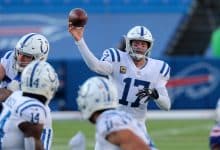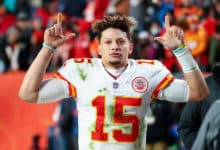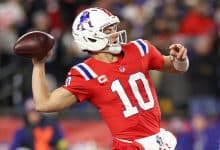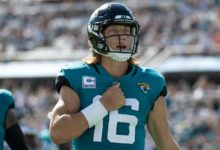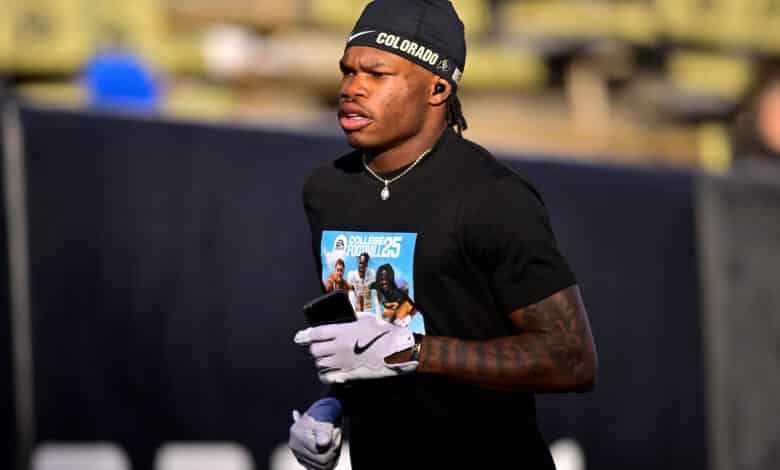
The 2025 NFL Draft is this week, and we’ve already looked at the top prospects for every major position group, including the top wide receivers and cornerbacks. Check that. We purposely left out Travis Hunter both times, because the two-way sensation truly believes he can play both positions in the NFL like he did at Colorado, which vaulted him to the 2024 Heisman Trophy and likely a very high draft pick in the NFL.
But some are saying Hunter threw out an ultimatum to the team who drafts him that he’ll “never play football again” if he can’t play wide receiver and corner in the NFL.
It’s highly debatable that he said that with real seriousness, but this is something that’s clearly important to him. But is it even feasible for him to do at the NFL level, and should the team who drafts him (Cleveland?) be concerned about him possibly chasing the wrong goal here?
Let’s look at Hunter as the No. 2 overall prospect in the 2025 NFL Draft at NFL Mock Draft Database. Is he setting the bar too high?
Table of Contents
The History of the Two-Way Player in the NFL
Depending how you look at it, there is a long or brief history of two-way players in the NFL. Let’s look at it by era.
The Pre-1950 Era (World War II)
Some would say a two-way player is a real throwback to NFL history. It used to be common to play on offense and defense in the same game, and some of the game’s greatest players in its first three decades (1920-50) were able to excel on both sides of the ball.
Don Hutson (1935-45) was far and away the best wide receiver in the NFL for the Green Bay Packers, but he also excelled at safety where he intercepted 30 passes, including a league-high six picks in 1940.
Sammy Baugh was the NFL’s best quarterback over its first 30 years of existence. Not only was Baugh a superior passer, but he was great as a punter and safety at the same time. In the 1943 season, Baugh threw the most passes (239) in the NFL, threw 23 touchdowns, but he also led the league in punts (50), led in punting average (45.9 yards) for the fourth season in a row, and he led the league with 11 interceptions on defense while playing just 10 games.
No one is sniffing all those numbers in the same season ever again. No one even tries to do so. When you note the years that Hutson and Baugh were dominating, their peaks were during World War II (1939-45), which was a primary reason for why so many players played both sides as too many players were missing for military reasons.
Frankly, they just didn’t have the roster depth to get by without doing that. In 1943, the same year Baugh posted those historic numbers, the Philadelphia Eagles and Pittsburgh Steelers had to combine forces as the “Phil-Pitt Combine” to field a full team that’s become known as the “Steagles” in NFL lore.
Imagine something like that happening today. Not to take anything away from Baugh, but it’s hard to see him doing what he did as well as he did in a different era.
Post-WWII to Super Bowl Era (1946-65)
After the war ended in 1945, things started to return to normal and football grew in popularity. The AAFC started in 1946, which led to the Cleveland Browns joining the NFL in 1950 with their innovative coach Paul Brown, who helped design so many of the methods used in modern coaching like game planning and preparation.
The game was getting more complex, specialization was taking over at player’s positions, and the television era was starting to grow the game’s popularity even more.
Soon, you didn’t see that many two-way players. Hall of Famer Chuck Bednarik (1949-62) was one of the few exceptions as he played center and linebacker for the Eagles, earning the nickname “Concrete Charlie” as one of the game’s last true ironmen.
But near the end of Bednarik’s career in the 1960s, the AFL came along as a more pass-happier league than the NFL, offering a new style of football that placed an emphasis on wide receiver speed and throwing the ball deep at a higher volume.
By the time the Super Bowl was created in 1966, roster sizes were increasing, a common draft was established in 1967, and the two-way player was going extinct.
Super Bowl Era (1966-Present)
Once the Super Bowl was established as a TV spectacle and the AFL merged with the NFL in 1970, the league was much different than those first decades. The idea of a two-way player now was someone like George Blanda, a veteran quarterback who started spending most of his snaps as the kicker (special teams) for the Raiders, who he joined at 40 years old.
But in terms of offense and defense, that was largely removed from the game.
One exception was William “The Refrigerator” Perry. The huge defensive tackle rose to fame during his rookie season for the 1985 Bears when he would sometimes sub in at fullback and block for Walter Payton or carry the ball himself. Perry most notably scored a 1-yard touchdown in Chicago’s 46-10 Super Bowl win, denying Payton a Super Bowl touchdown for his career.
One of the only examples of a modern two-way player is creating a little goal-line package for a defender to line up at fullback or tight end in heavy formations. Linebacker Mike Vrabel infamously did this for the Patriots, finishing with this absurd stat line (playoffs included): 12 catches, 12 touchdowns, 17 receiving yards. He had some receiving skills though.
Using Vrabel in a value-added way like that was par for the course for coach Bill Belichick in that era of New England football. In 2004, he infamously started using wide receiver Troy Brown at corner after so many injuries to his starters. He made it work too, though it was less successful when he tried using Julian Edelman at corner years later, including on the final drive of the 2011 AFC Championship Game against Baltimore.
In 2014, the Texans had J.J. Watt catch three touchdowns in a similar usage pattern to Vrabel. But again, it was just a small, goal-line package. For his NFL career, Watt played 14 snaps on offense compared to 7,925 snaps on defense. That’s more gimmick than a legitimate two-way player.
The full-time two-way player simply does not exist in the 21st century of the NFL. The closest it gets is a fullback who plays on the defensive line. Since 2012, only two NFL players have had a season where they played at least 100 snaps on both offense and defense. They were both part-time fullbacks/defensive linemen who were coached by a Harbaugh brother, and neither logged 500 snaps for the season on offense/defense:
- Patrick Ricard (2019 Ravens): 342 snaps on offense, 140 snaps on defense
- Scott Matlock (2024 Chargers): 362 snaps on offense, 137 snaps on defense
If you go back to 2006, only one NFL player has logged at least 150 snaps on offense and defense in the same season.
Mike Furrey joined the 2009 Browns at 32 years old to play wide receiver, but after injuries in the secondary, he played defensive back too. In the end, he finished with 311 offensive snaps and 281 defensive snaps. But he didn’t even log a target in the last five games while he was forced to play DB.
I’m not saying what Hunter wants to do can’t be done. But it certainly hasn’t been done at this level of NFL competition since the merger.
Travis Hunter’s Motivation Is Obvious
Travis Hunter’s ambition is certainly something to admire. His motivation to do this may be obvious too. Hunter has always done this on the football field as he excelled at wide receiver and corner in high school.
It’s more common for a two-way star to exist in high school. But Jackson changed his commitment from Florida State to Jackson State in 2021, a historic move that made him the first five-star recruit to sign with an HBCU or FCS school.
He continued to shine on both sides of the ball at Jackson State, and that carried over to a bigger stage in Colorado in 2023. This makes Hunter a unicorn in college football, and that’s a great way to stand out among the pack.
We’ve seen it in baseball recently with the way Shohei Ohtani rose to superstar status for what he did as a pitcher and batter, something no one else is doing these days in MLB. Hunter’s versatility was a big factor in him winning a close Heisman Trophy vote over running back Ashton Jeanty in 2024.

If such success follows Hunter to the NFL, it would easily help him become a superstar right away, raising his ability to earn money through endorsements. Speaking of the financial impact, it could lead to him someday becoming the highest-paid player in the NFL, or at least the highest for a non-quarterback if he’s viewed as someone who is giving you stellar play at both positions.
He could inspire a whole generation of players to try playing both sides, but there are serious questions about his ability to do this in the NFL, which isn’t Jackson State or Colorado.
The Deion Sanders Impact on Hunter
Another motivation for Hunter has to be the only coach he knows from college football.
Would Hunter have picked Jackson State if Deion Sanders wasn’t the coach? It seems unlikely. Sanders is one of the few players who can say he was a legitimate two-way player in the modern NFL. He was also an MLB player, so he was already one of the most famous two-sport athletes at the professional level.
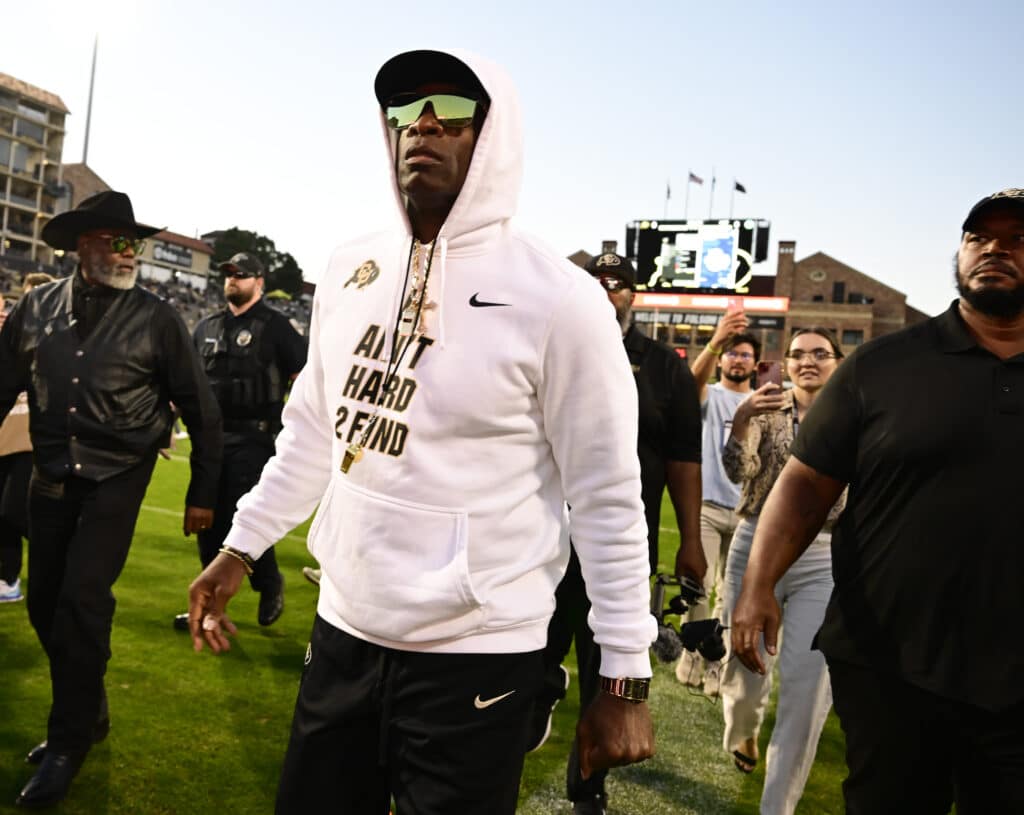
But while “Prime Time” was a Hall of Fame cornerback, he occasionally caught some passes in the NFL, catching six balls for 106 yards and a touchdown in his final season with the Falcons (1993).
It was the 1996 season in Dallas where Sanders did the closest thing (post-merger) to what Hunter is trying to do in the NFL. Sanders caught 36 passes (all in the season’s first 12 games) while also playing cornerback. He had 475 yards and a touchdown catch on 67 targets, so it wasn’t the greatest production, but it was legitimate two-way play. I don’t have snap count data for Sanders’ 1996 season but he was second on the team in targets and receiving yards while being a first-team All-Pro corner.
This feels like the blueprint for Hunter in the NFL. You’re not likely going to play him full time at wide receiver and sparingly use him at corner. It’s going to be the other way around. He plays corner full time and has some packages and plays drawn up for him on offense, making him an ideal WR2 behind an established WR1, and he could play a big part in two-minute drills at the end of halves.
But under Coach Prime, Hunter was allowed to play both ways most of the game at both Jackson State and when he followed Sanders to Colorado in 2023.
In the first game of the 2023 season for Colorado, Hunter put his name on the map in an upset win against TCU. He played 147 snaps, had 11 catches for 119 yards, and made three tackles with one interception on defense. Transcendental stuff.
Hunter finished the 2023 season averaging 115.1 snaps per game (437 on offense, 568 on defense). In 2024, Hunter took things to another level by staying healthy to play in 12 games, finishing with 92 catches for 1,152 yards, 14 touchdowns, and he made 32 combined tackles with four interceptions.
Hunter became the first college football player to win the Chuck Bednarik Award (nation’s top defensive player) and the Fred Biletnikoff Award (best wide receiver) in the same season. After logging an incredible 1,461 snaps (713 on offense, 748 snaps on defense, 24 on special teams) in 2024, Hunter won the Heisman Trophy Award in a close race.
If Hunter were to average 110 snaps per game as he did in college, the last two years, that would equate to 1,870 snaps in a 17-game NFL season. Anything over 1,300 snaps would be single-season record territory, so this would be an absurd undertaking by Hunter.
But he truly believes he can do this because it’s all he’s known in his football career, and Sanders no doubt has given him the confidence he can do it. The problem is Sanders won’t be his NFL coach – at least not in 2025.
Who Drafts Travis Hunter?
We know Hunter is the No. 2 overall prospect in this draft. Some feel he’s the best wide receiver and the best corner in his class. We also know the Titans are almost certainly taking quarterback Cam Ward with the No. 1 pick, so it may be Cleveland’s decision to draft Hunter or not.
At top-rated sportsbooks, Hunter’s odds to go No. 2 overall (presumably to Cleveland) keep shooting up. He’s up to -800 at Bet365 to go No. 2 right now. It’s not a sure thing but it looks likely.
That means we won’t get many teams to debate if Hunter is worth the potential headache if he’s hellbent on playing over 110 snaps per game on both sides of the ball.

First, that raises red flags for durability as Hunter doesn’t have a big frame (he’s 6’0” and 188 pounds) like a DK Metcalf or Marvin Harrison Jr. He only played in eight and nine college games in 2022 and 2023 because of injuries. His liver was lacerated on a hit in 2023.
Second, that much of a workload brings into concerns about fatigue and him getting tired at the end of games when you need him most. You see, good wideouts get gassed sometimes after running so many deep routes, and Hunter would be effective down the field instead of a Slant God.
Third, can he handle the step up in competition, and the steep learning curve for two difficult positions? Corners and wideouts are two of the hardest positions to pick up early, and he could be trying both. They are also reliant on how accurate the quarterback is. Your coverage stats can look better than they really are if you’re facing poor throws, and your receiving stats can take a hit with a lousy quarterback. Stats may not tell the story well on either side of the ball for him, leading to frustration.
Finally, maybe the biggest question is will Hunter be sacrificing greatness at one position for mediocrity at two? You don’t want to be a “jack of all trades, master of none” in the NFL. If he just picked one side and became an All-Pro, that’d likely serve his team better than trying to do both at an adequate level.
He’s a fascinating prospect, but he’s probably going to end up in Cleveland, where there’s not really a quarterback who can get him the ball unless Joe Flacco gets to start this year. Jerry Jeudy is trying to be the WR1 and not just a guy who exploded in a Denver Revenge Game last season. It’s not a great situation.
Frankly, it would be much more interesting to see the Giants take Hunter with the No. 3 pick. This way he becomes their best corner in a division where you have to match up with A.J. Brown, DeVonta Smith, Terry McLaurin, Deebo Samuel, and CeeDee Lamb. The,n with Malik Nabers at WR1, they have Russell Wilson and Jameis Winston at quarterback to make use of Hunter this year on deep routes and explosive plays.
It’s a much more interesting place for Hunter, but I doubt we get it. There are a lot of things I doubt with Hunter, like his capability of playing 1,800+ snaps in one season. But let’s wish him the best and see if he can be a revolutionary two-way player for the modern era.
If it’s going to happen, it’s going to be a corner who contributes at wide receiver, too. The days of Sammy Baugh dominating at quarterback, punter, and safety are gone with WWII.
Let’s just hope it doesn’t take another world war for a true two-way superstar to emerge in the NFL. I’m not taking Hunter’s accomplishments at face value if he’s facing the “New Steagles” twice a year.
But what a fascinating prospect and situation this is.
Related Articles:
- 2025 NFL Draft Preview: The Defensive Line and Edge Rushers Are the Cream of the Crop
- 2025 NFL Draft Preview: The Best Cornerbacks Not Named Travis Hunter
- 2025 NFL Draft Preview: Don’t Sleep on the Linebacker and Safety Classes
- 2025 NFL Draft Preview: The Top 10 Offensive Line Prospects
- 2025 NFL Draft Preview: Ashton Jeanty to Lead the Rebirth of the Running Back?
- 2025 NFL Draft Preview: Meet the Best Wide Receivers Not Named Travis Hunter
- Julio Jones Retires: More Proof Jerry Rice’s NFL Records Look Unbeatable in 2025
- 2025 NFL Draft Preview: Tyler Warren and the Value of a Great Tight End
- 2025 NFL Draft Preview: Don’t Expect a Deep Quarterback Class Like 2024
- Where Every NFL Team Stands After Free Agency: Super Bowl 60 Odds Update
- Bengals Bungle Team Building 101: Your Franchise QB Shouldn’t Need the Most Expensive Wide Receiver Duo in NFL History
- 2025 NFL Free Agency Update: Still Waiting on Aaron Rodgers to Decide
- 2025 NFL Free Agency: The Moves Already Made and Those Still to Come
- Will the NFL See Turnover Regression in 2025, And What Does It Mean for Teams Like the Bills and Eagles?
- The NFL Should Ban the Tush Push for 2025
- Do NFL Teams Have a Great Blueprint to Beat Patrick Mahomes and the Chiefs in 2025?
- 2025 NFL Season: Predicting the New Starting Quarterbacks from Aaron Rodgers to Cameron Ward
- Anatomy of a Super Bowl Blowout: Where the Chiefs and Eagles Go from Here and Super Bowl 60 Odds
